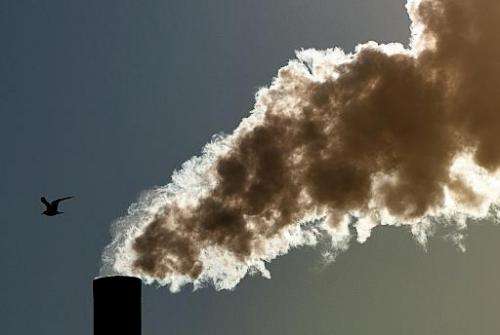UN sounds alarm over ozone-damaging nitrous oxide

Levels of nitrous oxide, a gas that both depletes the ozone layer and stokes global warming, could nearly double by mid-century, the UN warned on Thursday.
"We need all hands on deck to combat the serious and significant increases in N2O [nitrous oxide] levels in the atmosphere," UN Environment Programme (UNEP) chief Achim Steiner said in a report coinciding with the world climate talks in Warsaw.
Analysis by scientists from 35 organisations found that NO2 is now the most important ozone-depleting gas and the third most powerful greenhouse gas being emitted into the atmosphere, UNEP said.
On current trends, NO2 concentrations will rise by 83 percent by 2050 compared to 2005, the experts found.
NO2 exists naturally in the atmosphere in trace amounts, released as part of the exchange of nitrogen between the land and the air.
But levels of it have zoomed in the past decades, driven mainly by industrially-made nitrogen fertiliser in agriculture, pollution from road transport and emissions from the chemical industry.
The gas damages protective ozone molecules in the stratosphere, which help shield Earth from dangerous ultraviolet light.
It is not one of the substances included in the 1987 Montreal Protocol designed to phase out a range of ozone-depleting chemicals.
NO2 is also a potent greenhouse gas, being more than 300 times more effective than carbon dioxide (CO2) in trapping solar heat. A molecule lingers in the atmosphere for around 120 years before it degrades.
With agriculture accounting for two-thirds of man-made NO2 emissions, there is plenty of potential to reduce emissions through more efficient use of fertiliser, UNEP said.
Measures could include scrapping studies that encourage the overuse of nitrogen fertilisers, and making nitrogen pollution carry a price tag, perhaps through tradable permits.
Switching to a less meat-based diet would also help, as the production of animal protein leads to far higher NO2 emissions than plant protein, the report said.
These and other measures could save the equivalent of 800 million tonnes of CO2 in greenhouse-gas emissions by 2020.
That amounts to around eight percent of the "emissions gap"—meaning the gulf in carbon pollution that must be narrowed to meet the UN's target of limiting global warming to two degrees Celsius (3.6 degrees Fahrenheit) over pre-industrial levels, UNEP said.
The negotiations in Warsaw wrap up on Friday, concluding an 11-day annual round under the UN Framework Convention on Climate Change (UNFCCC).
UN members have pledged to forge a global pact by the end of 2015 that will roll back climate-damaging gases and channel aid to poor countries.
© 2013 AFP

















